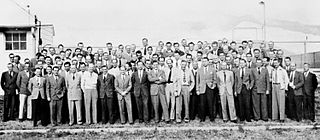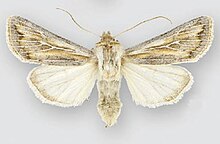
Otero County is a county located in the U.S. state of New Mexico. As of the 2020 census, the population was 67,839. Its county seat is Alamogordo. Its southern boundary is the Texas state line. It is named for Miguel Antonio Otero, the territorial governor when the county was created.

White Sands is a census-designated place (CDP) in Doña Ana County, New Mexico, United States. It consists of the main residential area on the White Sands Missile Range. As of the 2010 census the population of the CDP was 1,651. It is part of the Las Cruces Metropolitan Statistical Area.

Alamogordo is the seat of Otero County, New Mexico, United States. A city in the Tularosa Basin of the Chihuahuan Desert, it is bordered on the east by the Sacramento Mountains and to the west by Holloman Air Force Base. The population was 31,384 as of the 2020 census. Alamogordo is widely known for its connection with the 1945 Trinity test, which was the first ever explosion of an atomic bomb.

White Sands Missile Range (WSMR) is a United States Army military testing area and firing range located in the US state of New Mexico. The range was originally established in 1941 as the Alamogordo Bombing and Gunnery Range, where the Trinity test site lay at the northern end of the Range, in Socorro County near the towns of Carrizozo and San Antonio. It then became the White Sands Proving Ground on 9 July 1945.

White Sands National Park is an American national park located in the state of New Mexico and completely surrounded by the White Sands Missile Range. The park covers 145,762 acres in the Tularosa Basin, including the southern 41% of a 275 sq mi (710 km2) field of white sand dunes composed of gypsum crystals. This gypsum dunefield is the largest of its kind on Earth, with a depth of about 30 feet (9.1 m), dunes as tall as 60 feet (18 m), and about 4.5 billion short tons of gypsum sand.

The Tularosa Basin is a graben basin in the Basin and Range Province and within the Chihuahuan Desert, east of the Rio Grande in southern New Mexico and West Texas, in the Southwestern United States.
The Tularosa Basin Museum of History, formerly the Tularosa Basin Historical Society Museum, is a history museum holding a collection of historical photographs, documents, and relics from Otero County, New Mexico. The museum is located in Alamogordo, New Mexico, and is owned and operated by the Tularosa Basin Historical Society.

Sparkia is a genus of moths of the family Noctuidae. It contains only one species, Sparkia immacula, which is found in Arizona and New Mexico.

Protogygia whitesandsensis is a moth of the family Noctuidae. It is found in the White Sands National Park, Otero County, New Mexico. The length of the forewings is 14–17 mm.

Protogygia pectinata is a moth of the family Noctuidae. It is found in the White Sands National Park, Otero County, New Mexico.

Protogygia biclavis is a moth of the family Noctuidae. It is found in the White Sands National Park, Otero County, New Mexico as well as California, Utah and Arizona.

Euxoa lafontainei is a moth of the family Noctuidae. It is found in White Sands National Monument, Otero County, New Mexico.

Ernst August Wilhelm Steinhoff was a rocket scientist and member of the "von Braun rocket group", at the Peenemünde Army Research Center (1939–1945). Ernst Steinhoff saw National Socialist (Nazi) doctrines as "ideals" and became a member of the NSDAP in May 1937. He was a glider pilot, holding distance records, and had the honorary Luftwaffe rank of "Flight Captain".

Aleptina arenaria is a moth of the family Noctuidae. It is only known from the White Sands National Park, Otero County, New Mexico.
Cochylis yinyangana is a species of moth of the family Tortricidae. It is only known from the White Sands National Park in Otero County, New Mexico and at Carlsbad Caverns National Park in Eddy County, also in New Mexico.
Chionodes hodgesorum is a moth in the family Gelechiidae. It is found in North America, where it has been recorded from the gypsum dunes at White Sands National Park in New Mexico.

Protogygia lagena, the lagena dart, is a species of cutworm or dart moth in the family Noctuidae. It is found in North America.
Protogygia enalaga is a species of cutworm or dart moth in the family Noctuidae. It is found in North America.
Protogygia postera is a species of cutworm or dart moth in the family Noctuidae. It is found in North America.
Protogygia polingi is a species of cutworm or dart moth in the family Noctuidae. It was first described by William Barnes and Foster Hendrickson Benjamin in 1922 and it is found in North America.














